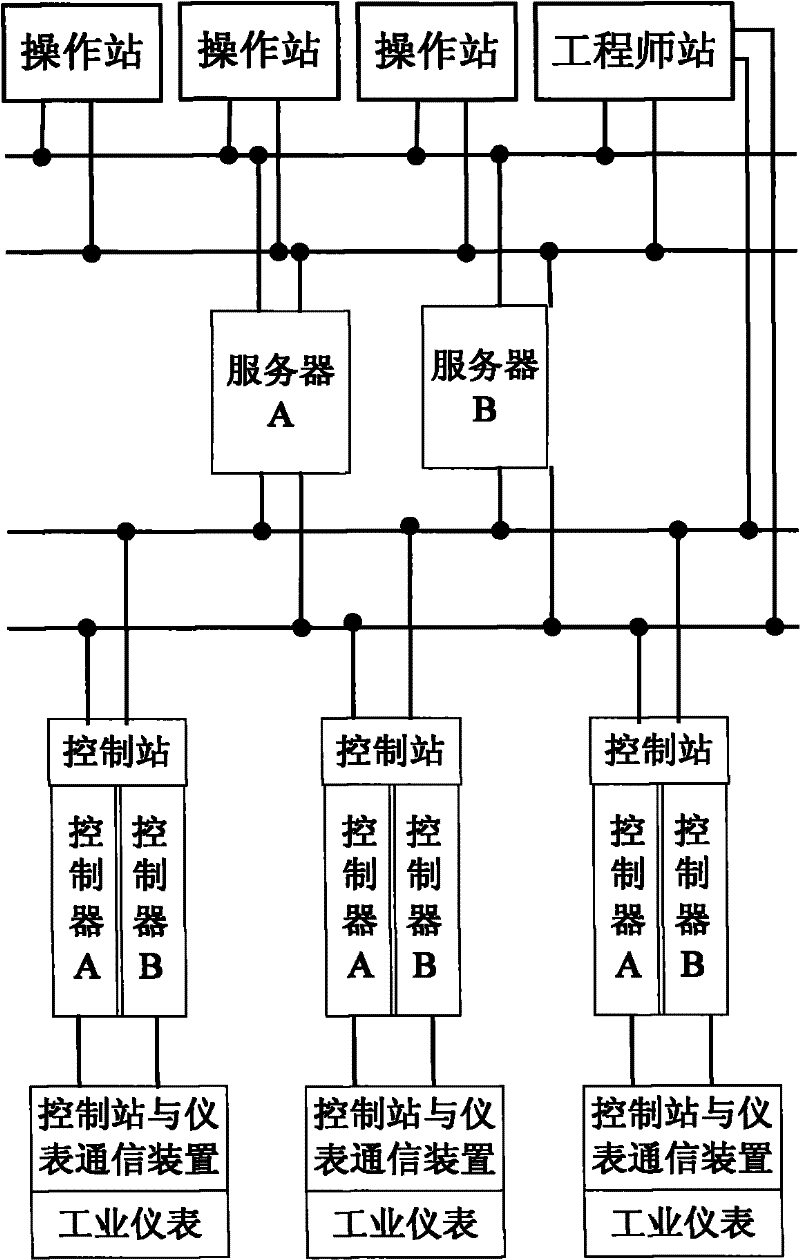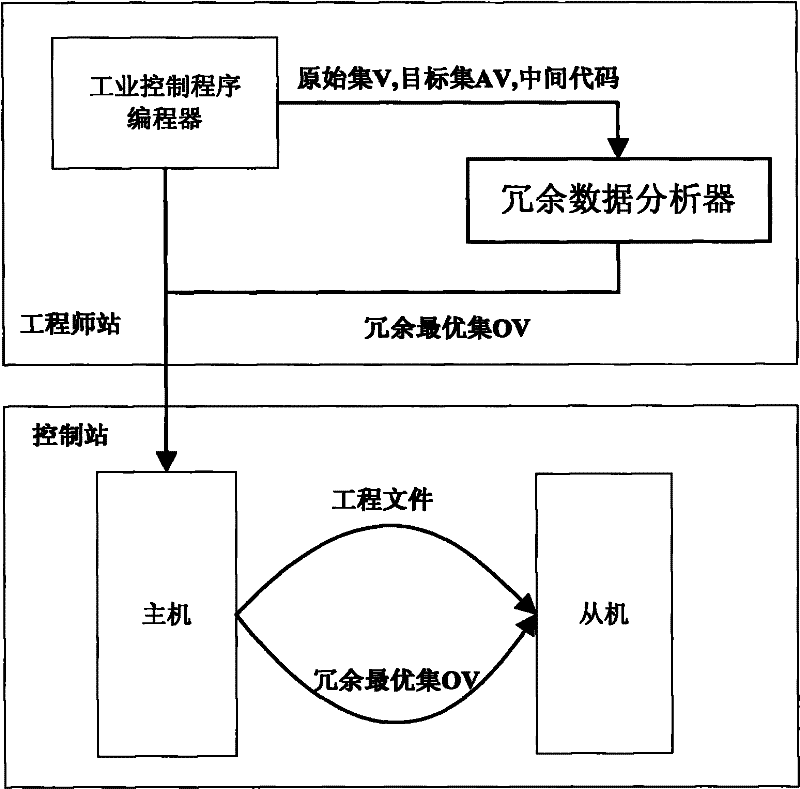Method for automatically selecting redundant data, analyzer and method for realizing non-interference switch
A technology of redundant data and automatic selection. The redundancy applied in the operation is used for data error detection and response error generation. It can solve the problems of error-prone, large workload of retained data, and burden of controller software and hardware.
- Summary
- Abstract
- Description
- Claims
- Application Information
AI Technical Summary
Problems solved by technology
Method used
Image
Examples
example 1
[0095] VAR
[0096] a: DINT;
[0097] b: DINT;
[0098] c: DINT;
[0099] d: BOOL;
[0100] e: DINT;
[0101] END_VAR
[0102] The original set V and target set AV are:
[0103] V={a, b, c, d, e}; in this example, AV=V;
[0104] The intermediate code is:
[0105] a: = 1;
[0106] b:=b+1;
[0107] c:=a*2+1+e;
[0108] IF e>=100THEN
[0109] d: = 0;
[0110] ELSE
[0111] d: = 1;
[0112] END_IF
[0113] The above calculation logic can be converted into the following functional formula:
[0114] a=f 1 ()
[0115] b=f 2 (b)
[0116] c=f 3 (a, e)
[0117] d=f 4 (e)
[0118] Therefore, the relational set F is:
[0119] F={(1, a=f 1 ()), (2, b=f 2 (b)), (3, c=f 3 (a, e)), (4, d=f 4 (e))}.
[0120] The job of the converter is to convert the intermediate code to generate a relation set. As can be seen in the above example, the assignment statement in the intermediate code can be directly converted:
[0121] Another example:
[0122] a=b+c; should be converted to a functional formula: a=f(b, c)
[0123] c: =a*2+1+e; s...
example 2
[0307] VAR / / define variables a, b, c, d, e
[0308] a: DINT;
[0309] b: BOOL;
[0310] c: DINT;
[0311] d: DINT;
[0312] e: DINT;
[0313] END_VAR
[0314] IF a>=100
[0315] THEN
[0316] b: = 0;
[0317] a: = 0;
[0318] ELSE
[0319] b: = 1;
[0320] a:=a+1;
[0321] END_IF
[0322] c:=a*2+1+e;
[0323] d:=c-a;
[0324] The above code can be converted into a functional formula in operation logic:
[0325] b=f 1 (a)
[0326] a=f 2 (a)
[0327] c=f 3 (a, e)
[0328] d=f 4 (a, c)
[0329] Therefore, the sets V, AV and F are:
[0330] V={a, b, c, d, e};
[0331] AV can be any subset of V. In this example, AV=V;
[0332] F={(1, b=f 1 (a)), (2, a=f 2 (a)), (3, c=f 3 (a, e)), (4, d=f 4 (a, c))}.
[0333] It can be seen intuitively that OV={a,e}
[0334] In fact, the constraint condition of the optimizer is to ensure that when the control station is out of synchronization for various reasons in the future (the number of operation cycles is far apart), the following processing procedures of the control station ...
example 3
[0363] Example 3: The following relationship set:
[0364] y=f(x)
[0365] x=f(a)
[0366] Let AV={y}
[0367] Analysis: If you only need to copy and update the OV data at the end of the first operation cycle, the AV is undisturbed, then only OV={x} is required, but from the engineering logic point of view, the AV of the dual machine at the end of the second cycle Whether the value of the variable y is consistent is uncertain. For such engineering logic, in order to ensure that the AV variable y is undisturbed, it is obvious that redundancy x is required, a that is, OV={x, a}.
[0368] Through example 3, it can be seen that the more optimal set OV is copied between the two machines, and the variable value of the target set AV should be kept consistent with the two machines at the end of any positive integer cycle instead of one cycle, that is, in the mathematical description of the optimization problem n should be any positive integer, and it cannot be limited to n=1, otherwise the r...
PUM
 Login to View More
Login to View More Abstract
Description
Claims
Application Information
 Login to View More
Login to View More - R&D
- Intellectual Property
- Life Sciences
- Materials
- Tech Scout
- Unparalleled Data Quality
- Higher Quality Content
- 60% Fewer Hallucinations
Browse by: Latest US Patents, China's latest patents, Technical Efficacy Thesaurus, Application Domain, Technology Topic, Popular Technical Reports.
© 2025 PatSnap. All rights reserved.Legal|Privacy policy|Modern Slavery Act Transparency Statement|Sitemap|About US| Contact US: help@patsnap.com



